Slippery surfaces can pose a significant risk to individuals, leading to accidents and injuries. In certain settings, such as bathrooms, kitchens, and outdoor areas, the use of anti slip porcelain tiles has become increasingly popular. These tiles are specifically designed to enhance traction and reduce the likelihood of slipping, offering a safer environment for both residential and commercial spaces.
This article aims to provide a comprehensive overview of anti slip porcelain tiles, covering various aspects such as their definition, benefits, factors influencing their anti-slip properties, and different slip resistance ratings. Additionally, it will explore the different types of anti slip porcelain tiles available in the market and provide guidance on where they are best suited for installation.
Furthermore, the article will address frequently asked questions regarding anti-slip tiles, offering readers a deeper understanding of their features and applications.
By presenting this information in an objective and technical manner, this article seeks to inform readers about the importance of anti slip porcelain tiles and empower them to make informed decisions when selecting suitable flooring options for their specific needs.

- anti slip porcelain tiles provide a safe flooring solution for areas prone to moisture and high foot traffic.
- These tiles are low maintenance, resistant to stains, and easy to clean.
- They are suitable for both indoor and outdoor use, and can withstand heavy use.
- The slip-resistant properties of anti slip porcelain tiles make them ideal for commercial spaces and outdoor applications.
Anti slip porcelain tiles are ceramic tiles designed with a textured surface to enhance traction and reduce the risk of slipping. These tiles are specifically engineered to provide a safe and secure flooring solution, especially in areas prone to moisture or water exposure. They are commonly used in wet rooms, bathrooms, and outdoor spaces, where slip accidents are more likely to occur.
The non-slip feature of anti slip porcelain tiles is achieved through the incorporation of textured patterns, such as raised dots or grooves, on the surface of the tile. This texture creates friction and increases grip, allowing for better traction even when the floor is wet or soapy. The anti-slip properties of these tiles are measured using a coefficient of friction (COF), which indicates the resistance to slipping.
In wet rooms or bathrooms, where water can accumulate on the floor, anti slip porcelain tiles provide a reliable and durable solution. They offer a secure surface that minimizes the risk of accidents, making them suitable for both residential and commercial applications. Additionally, outdoor anti slip porcelain tiles are designed to withstand weather conditions and provide a safe walking surface in outdoor areas such as patios, pool decks, and walkways.
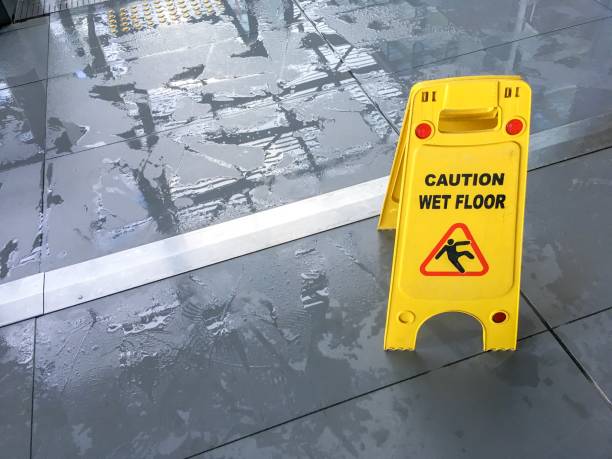
Anti slip porcelain tiles offer several benefits that make them a popular choice for various applications.
Enhancing the level of safety in residential and commercial spaces, the implementation of anti slip porcelain tiles can significantly reduce the risk of accidents caused by slippery surfaces. These tiles provide numerous benefits, making them a popular choice for kitchens, bathrooms, and outdoor areas.
- Non-slip surface: anti slip porcelain tiles feature a textured surface that provides excellent traction, preventing slips and falls, especially in areas prone to moisture or spills.
- Commercial use: These tiles are ideal for commercial spaces where high foot traffic is expected, such as restaurants, hospitals, and shopping malls. Their anti-slip properties ensure the safety of employees and customers.
- Outdoor application: Anti-slip porcelain garden tiles are specifically designed to withstand outdoor conditions. They offer enhanced grip, even when wet, making them suitable for patios, pool decks, and pathways.

One notable advantage of using porcelain tiles in residential and commercial spaces is their low maintenance requirements, which can save both time and money in the long run. According to a study conducted by a leading tile manufacturer, porcelain tiles are found to be highly resistant to stains, scratches, and fading, requiring minimal effort to keep them looking clean and pristine.
This is due to their composition, which consists of a dense, non-porous structure that prevents the absorption of liquids and dirt. The tiles are also fired at high temperatures, resulting in a hard, durable surface that is less prone to wear and tear. Additionally, the manufacturing process includes the application of a glaze that further enhances the tile's resistance to stains and scratches.
As a result, regular cleaning can be easily accomplished with mild detergents and water, without the need for specialized or harsh cleaning agents.
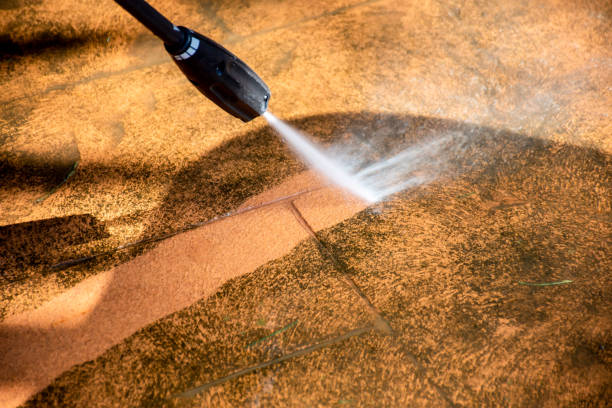
The ease of installation of these tiles is a noteworthy advantage that appeals to both homeowners and contractors. The process of installing anti slip porcelain tiles is straightforward and efficient, making it a preferred choice for many.
Here are some key factors that contribute to the easy installation of these tiles:
- Interlocking system: The tiles are designed with an interlocking system that allows for seamless installation without the need for adhesives or grout. This not only simplifies the installation process but also ensures a more stable and durable floor.
- Precise sizing: The tiles are manufactured with precise sizing, ensuring a perfect fit during installation. This eliminates the need for complicated cutting or trimming, saving time and effort.
- Lightweight design: anti slip porcelain tiles are lightweight, making them easier to handle and install. This characteristic also reduces the risk of strain or injury during installation.
- Versatility: These tiles can be installed in various indoor and outdoor environments, including bathrooms, kitchens, and pool areas. Their versatility allows for easy integration into different design schemes.
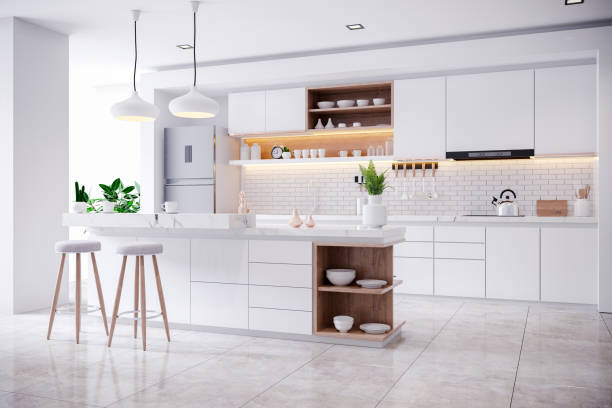
Adaptable to various environments, these versatile anti slip porcelain tiles seamlessly integrate into different design schemes and effortlessly enhance the aesthetic appeal of any indoor or outdoor space. Their adaptability stems from their exceptional durability and resistance to moisture, making them suitable for a wide range of applications. Whether it is a residential or commercial setting, these tiles can withstand heavy foot traffic, ensuring long-lasting performance. Moreover, their anti-slip properties provide a secure and safe surface, reducing the risk of accidents even in wet conditions.
The adaptability of these tiles is further enhanced by their availability in a variety of sizes, colors, and patterns. This allows for endless design possibilities, enabling designers and architects to create unique and personalized spaces. Additionally, these tiles can be installed easily using various methods such as adhesive or floating installation, providing flexibility and convenience during the installation process.
To provide a visual representation of the versatility of anti slip porcelain tiles, the following table showcases some of the key features and benefits associated with their adaptable use:
| Feature | Benefit |
| Exceptional durability | Ensures long-lasting performance |
| Resistance to moisture | Suitable for indoor and outdoor applications |
| Anti-slip properties | Provides a secure and safe surface |
| Wide range of sizes, colors, and patterns | Enables endless design possibilities |
| Easy installation methods | Provides flexibility and convenience |

With an exceptional ability to withstand heavy usage and harsh conditions, the durability of anti slip porcelain tiles ensures a long-lasting and reliable surface. These tiles are specifically designed to withstand high foot traffic areas, making them ideal for commercial and public spaces.
The strong durability of these tiles is attributed to their composition, which includes a dense and compact structure that resists cracks and chips. Additionally, the tiles undergo a firing process at high temperatures, which further enhances their strength and resistance to wear and tear.
Furthermore, the anti-slip properties of these tiles are maintained over time, ensuring the safety of individuals walking on them. Their durability makes them suitable for various applications, including outdoor areas, wet environments such as bathrooms and kitchens, as well as high-traffic indoor spaces like shopping malls and airports.

In addition to their strong durability, anti slip porcelain tiles offer a wide range of designs, making them a versatile choice for various settings.
These tiles are available in an extensive array of patterns, colors, and textures, allowing for diverse aesthetic options that can complement any interior or exterior design scheme.
With advancements in technology, manufacturers can now replicate the appearance of natural materials such as wood, stone, and marble, providing a cost-effective alternative without compromising on visual appeal.
Furthermore, the designs of anti slip porcelain tiles are not only limited to imitating natural materials but also include contemporary and abstract patterns, catering to modern architectural preferences.
The availability of various designs ensures that these tiles can be seamlessly incorporated into any space, enhancing its visual appeal while maintaining the desired safety features.
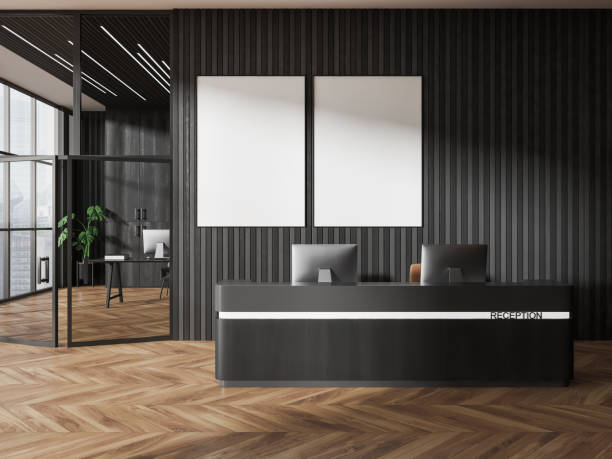
Surface texture, coefficient of friction, and moisture and contaminants are key factors that influence the anti-slip properties of porcelain tiles.
The texture of anti slip porcelain tiles plays a crucial role in enhancing their safety and functionality. The surface texture affects the level of grip and traction provided by the tiles, which is important in preventing slips and falls. Here are four key factors related to surface texture that influence the anti-slip properties of porcelain tiles:
By considering these factors, manufacturers can design anti slip porcelain tiles with improved safety and functionality for various applications.
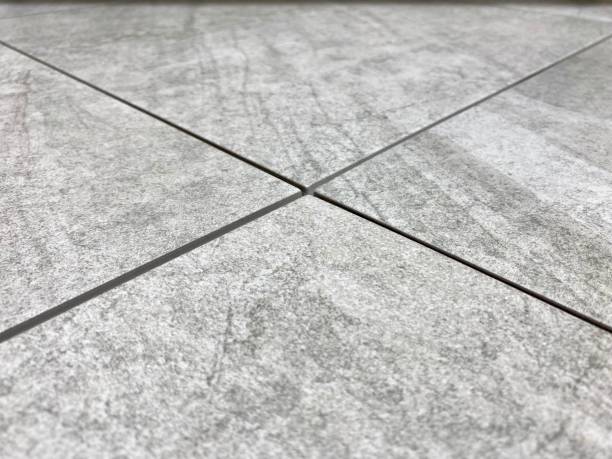
One important factor to consider when evaluating the safety of textured porcelain tiles is the coefficient of friction. The coefficient of friction refers to the measure of the resistance between two surfaces when they are in contact with each other. In the context of porcelain tiles, a higher coefficient of friction indicates a greater resistance to slipping. This property is crucial in areas that are prone to moisture or where there is a high risk of slipping, such as bathrooms, kitchens, or swimming pool decks.
To better understand the concept of coefficient of friction, the following table provides a visual representation of different values and their corresponding slip resistance levels:
| Coefficient of Friction | Slip Resistance Level |
| Below 0.4 | Low |
| 0.4 - 0.6 | Moderate |
| Above 0.6 | High |
By selecting porcelain tiles with a high coefficient of friction, the risk of accidents due to slipping can be significantly reduced, providing a safer environment for users.
Moisture and contaminants present on textured porcelain tiles can significantly affect their coefficient of friction, thereby impacting their slip resistance levels and ultimately the safety of the environment.
Porcelain tiles are commonly used in areas that are exposed to moisture, such as bathrooms and kitchens, where spills and water splashes are common occurrences. When moisture is present on the surface of the tile, it creates a thin film of water that can reduce the friction between the tile and a person's footwear. This reduction in friction increases the likelihood of slips and falls.
Similarly, contaminants such as dirt, oil, or grease can further compromise the slip resistance of the tile by creating a barrier between the footwear and the tile surface.
Therefore, it is crucial to regularly clean and maintain textured porcelain tiles to ensure their optimal slip resistance performance and improve the safety of the environment.
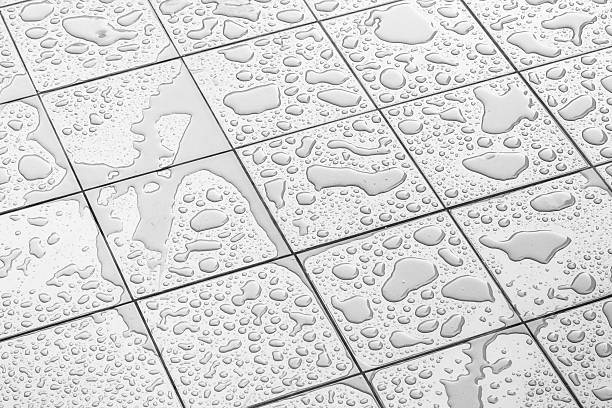
The discussion on the different types of tile slip ratings includes:
To accurately measure the slip resistance of anti slip porcelain tiles, the Pendulum test method employs a swinging arm with a rubber slider that mimics the movement of a human foot on wet surfaces. This test is widely used in the industry due to its simplicity and reliability.
Here are some key features of the Pendulum test:
- Objective measurement: The test provides an objective measurement of the slip resistance by measuring the dynamic coefficient of friction (DCOF).
- Realistic simulation: The swinging arm with a rubber slider replicates the movement of a human foot, ensuring a realistic simulation of the slipperiness on wet surfaces.
- Consistency: The Pendulum test is known for its consistency in providing accurate and reliable results, making it a preferred method for assessing the slip resistance of anti slip porcelain tiles.
- Standardized testing: The test follows strict procedures and standards, ensuring consistent and comparable results across different laboratories and manufacturers.
Overall, the Pendulum test is a valuable tool in determining the slip resistance of anti slip porcelain tiles, allowing for informed decisions regarding their suitability for various applications.
image from https://pendulum-test.co.uk
Interestingly, the Ramp test method offers a unique perspective on assessing the slip resistance of certain ceramic surfaces. This test involves pushing a weighted sled across a ramp covered with the tile being evaluated. The angle of the ramp is gradually increased until the sled starts to slide. The angle at which this occurs is known as the critical angle of inclination. By measuring this critical angle, the slip resistance of the tile can be determined.
The Ramp test provides a more realistic simulation of real-life scenarios compared to other methods. It takes into account factors such as the presence of water or contaminants on the surface, which can significantly affect slip resistance. This method is particularly useful for assessing the slip resistance of tiles in areas prone to frequent spills or moisture, such as bathrooms or kitchens.
To better understand the slip resistance classifications obtained from the Ramp test, the following table provides a summary of the different categories:
| Classification | Angle of Inclination (degrees) | Slip Resistance Level |
| Very Low | <6 | Poor |
| Low | 6-10 | Moderate |
| Moderate to High | 10-19 | Good |
Impersonally presenting the Barefoot Ramp test, a novel method for assessing the slip resistance of ceramic surfaces, provides a unique approach that simulates real-life scenarios and accounts for factors such as moisture and contaminants.
This test involves human subjects walking barefoot on an inclined surface covered with the porcelain tiles being evaluated.
The inclination angle is gradually increased until the subject slips. The coefficient of friction is then calculated based on the angle at which slipping occurs.
The Barefoot Ramp test offers several advantages over traditional methods, including its ability to mimic real-life conditions and its consideration of factors that influence slip resistance.
Furthermore, this method provides a more accurate representation of slip resistance as it takes into account the effect of moisture and contaminants, which are common in real-world situations.
The slip resistance rating (R rating) is a measure of the level of traction or grip that a surface, such as a floor or a tile, provides to prevent slips and falls, especially in areas where the floor might become wet or slippery. The R rating system is commonly used to classify the slip resistance of flooring materials, especially in commercial and public spaces, to help ensure safety for people walking on them.
The R rating is typically assigned based on laboratory testing using specific procedures and instruments that simulate various conditions of wetness. The testing involves measuring the coefficient of friction between a sliding object (often a standardized rubber slider) and the surface of the material being tested. The resulting coefficient of friction value is then translated into an R rating, which indicates the slip resistance level of the surface.
The R ratings are categorized as follows:
R9: Extremely low slip resistance. Suitable for dry, low-risk areas where there's minimal risk of slipping.
R10: Low slip resistance. Suitable for dry and slightly wet areas with a low risk of slipping.
R11: Moderate slip resistance. Suitable for areas with occasional exposure to water, like bathrooms.
R12: High slip resistance. Suitable for areas with regular exposure to water, like commercial kitchens.
R13: Very high slip resistance. Suitable for areas constantly exposed to water, like swimming pool decks.
It's important to note that the specific R rating recommended for different areas can vary based on local regulations, building codes, and the intended use of the space. The R rating system is just one of several methods used to evaluate slip resistance, and it's always recommended to consult local guidelines and safety standards when selecting flooring materials for different environments.
| Rating No. | Suitable for... |
| R 9 (the lowest value) | • Most domestic internal use. • If used in a bathroom, a towel or mat should be used to dry feet on. |
| R 10 | • Living areas • Kitchens • Hallways • If used in a bathroom, a towel or mat should be used to dry feet on. |
| R 11 | • Domestic use • Office entrances • Lavatories • Commercial areas (e.g., small factories) |
| R 12 | • Larger commercial areas that may have contaminates, • External patios if using porcelain tiles. |
| R 13 | • Around swimming pools • Areas where there may be constant wetness. • Slopes • Commercial areas that may be contaminated with oils etc. |
When considering the slip resistance of tiles, there are several factors to look out for:
1. Confirm 'R' Rating with Sample Test: Because the slip resistance might vary across different batches of flooring, it's essential to confirm the 'R' Rating through testing rather than relying solely on packaging information. Conducting a sample test on the actual flooring can give you a more accurate idea of its slip resistance.
2. Perform Pendulum Test Early: To ensure that your flooring performs as intended, it's advisable to conduct a Pendulum test as soon as the flooring is laid. This early testing helps identify any potential issues with slip resistance before the entire floor is finished, avoiding the need to redo the entire installation later.
3. Higher PTV for Sloped Areas: In areas with slopes, it's recommended to increase the Pendulum Test Value (PTV) by two for every one slope. This adjustment accounts for the increased risk of slipping on sloped surfaces and ensures that the flooring maintains adequate slip resistance.
4. Consider Material Wear: Different flooring materials wear differently over time. For instance, vinyl might wear out more quickly than other materials. To counteract this, especially in high-traffic areas, opting for tiles with a higher 'R' Rating can help maintain slip resistance even as the flooring material wears down.
5. Product Range and Support: The guide concludes by suggesting that readers explore the available range of products for unique flooring solutions. Additionally, if further assistance is required, readers can contact the customer service team for support with their purchase.
There are various types of anti-slip porcelain tiles available, each designed to provide traction and prevent slips and falls, especially in areas where there's a potential for water or moisture accumulation. These tiles are commonly used in bathrooms, kitchens, swimming pool decks, outdoor areas, and other places where slip resistance is crucial. The slip resistance of these tiles is often rated using the coefficient of friction (COF) value.
Here are some common types of anti-slip porcelain tiles:
1. Textured Tiles: Textured tiles have a rough surface that enhances grip and reduces the risk of slipping. They often come in various patterns and designs and are suitable for both indoor and outdoor use.
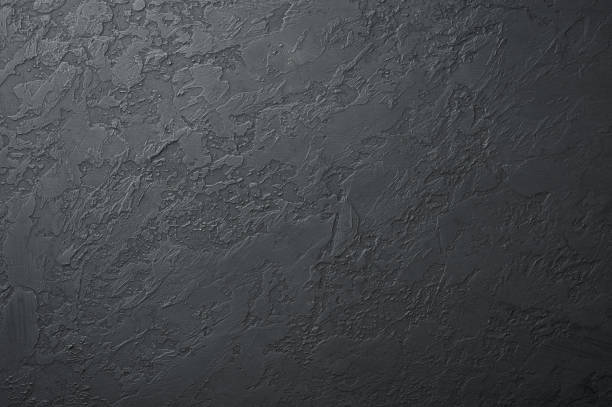
2.Rough Finish Tiles: These tiles have a coarse and grainy finish that provides excellent slip resistance. They are commonly used in outdoor spaces, walkways, and pool decks.
3.Grip-Enhancing Tiles: Some porcelain tiles are specially manufactured to have an enhanced grip. They might have unique surface patterns or micro-textures that improve traction.
4.R11-R13 Rated Tiles: These ratings are based on the DIN 51130 standard and indicate the slip resistance of tiles in different settings. R11 tiles are suitable for slightly slippery areas like bathrooms, while R12 and R13 tiles are more suitable for industrial and commercial spaces with higher slip risk.
5.Ceramic Mosaic Tiles: Mosaic tiles often have a textured surface due to their small size and irregular shapes. They provide good slip resistance while also adding aesthetic value to the area.
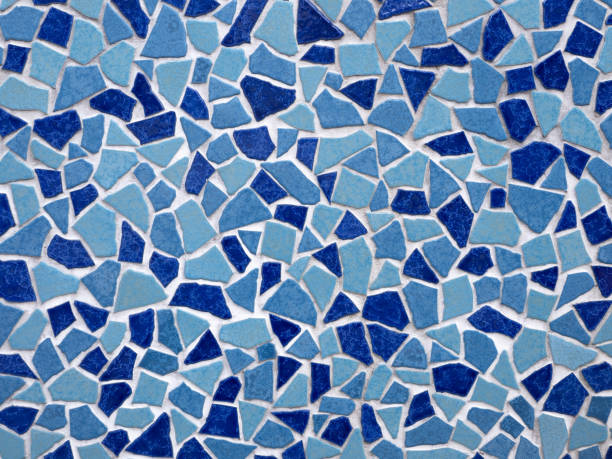
6.Cleft Finish Tiles: These tiles have a natural split surface that enhances grip. They are commonly used in outdoor applications.
7.Flamed Finish Tiles: Flaming the surface of the tile creates a rough texture that is slip-resistant. These tiles are often used in areas where water exposure is common, such as around pools.
8.Grip Inserts: Some porcelain tiles come with grip inserts made of materials like rubber, cork, or other non-slip materials. These inserts are often placed strategically on the tile's surface to provide additional traction.
When selecting anti-slip porcelain tiles, it's important to consider the location and purpose of the tiles, the expected level of foot traffic, and the potential for water or other liquids to be present. It's also a good idea to check the manufacturer's specifications and recommendations for proper installation and maintenance to ensure the longevity of the tiles' slip-resistant properties.
When choosing the right anti slip porcelain tiles, it is important to assess the environment in which they will be installed. Factors such as moisture levels, foot traffic, and temperature fluctuations should be taken into consideration to ensure the tiles will perform well in the specific conditions.
Additionally, safety regulations should be followed to ensure compliance with building codes and standards. This includes selecting tiles with appropriate slip resistance ratings to prevent accidents and injuries.
Lastly, visual aesthetics should also be considered to ensure the tiles not only provide a safe surface but also enhance the overall design of the space.
Assessing the environment is essential when considering the fact that 70% of workplace accidents are caused by slips, trips, and falls, making it imperative to prioritize anti slip porcelain tiles. These tiles provide a safe and secure walking surface, minimizing the risk of accidents.
When assessing the environment, several factors should be taken into account:
- Foot traffic: Consider the number of people walking in the area and their movement patterns.
- Surface conditions: Evaluate the presence of moisture, oil, or other substances that can affect the slip resistance of the tiles.
- Slopes and inclines: Determine if the area has any slopes or inclines, as these increase the likelihood of slips and falls.
- Climate: Take into consideration the temperature and weather conditions that can impact the tiles' performance.
By carefully considering these factors, one can make an informed decision regarding the selection and installation of anti slip porcelain tiles, ensuring a safer workplace environment.
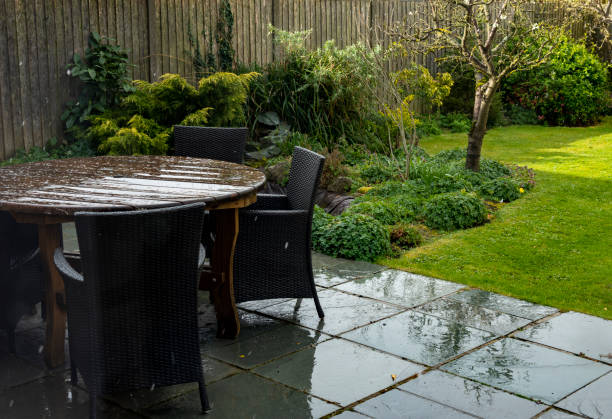
Safety regulations play a crucial role in ensuring a secure and hazard-free workplace environment. These regulations are put in place to minimize the risk of slips, trips, and falls, which can occur due to slippery surfaces.
When it comes to anti slip porcelain tiles, it is important to adhere to safety regulations to prevent accidents and injuries. In order to comply with safety regulations, it is necessary to select anti slip porcelain tiles that meet the required standards for slip resistance. These standards are determined by various testing methods, such as the pendulum test, which measures the dynamic coefficient of friction.
Additionally, safety regulations may also require the installation of proper signage to alert individuals to potential slip hazards. By following safety regulations, the risk of accidents can be significantly reduced, creating a safer environment for all occupants.
Visual aesthetics are an important consideration in the selection of porcelain tiles, as they can greatly enhance the overall appeal and ambiance of a space. The visual appeal of porcelain tiles is attributed to their ability to mimic natural materials such as stone, wood, or marble, offering a wide range of design options. These tiles come in various colors, patterns, and textures, allowing for endless creative possibilities in interior design. Additionally, porcelain tiles can be manufactured with intricate designs and patterns, adding artistic and decorative elements to a space.
| Visual Characteristics | Description |
| Color Variations | Porcelain tiles offer a wide range of colors, from neutral tones to vibrant hues, allowing for customization and coordination with other elements. |
| Surface Finishes | Tiles can have various finishes, including matte, polished, textured, or glazed, providing different visual and tactile experiences. |
| Patterns | Porcelain tiles can be manufactured with various patterns, such as geometric designs, floral motifs, or intricate mosaics, adding visual interest. |
| Size Options | Tiles come in different sizes, including standard and large format options, offering versatility and flexibility in design. |
| Visual Texture | Porcelain tiles can replicate the texture of natural materials, such as the grain of wood or the roughness of stone, adding depth and character. |
To enhance traction and reduce the slipperiness of existing outdoor tiles, certain measures can be taken.
Cleaning: Thoroughly clean the tiles to remove any dirt, grime, or moss that may contribute to a slippery surface. Use a pressure washer or a scrub brush with a cleaning solution specifically designed for outdoor tiles.
Applying anti-slip coatings: Apply an anti-slip coating to the tiles. These coatings are typically made of epoxy or polyurethane and contain additives that increase traction. They create a textured surface that improves grip, even when wet.
Installing anti-slip mats or strips: Another option is to install anti-slip mats or strips on the tiles. These mats or strips are made of rubber or other non-slip materials and can be easily adhered to the surface of the tiles.
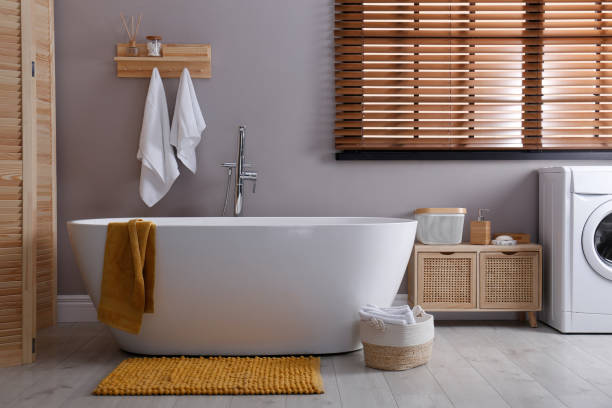
It is possible to install outdoor tile over a concrete surface, which provides a durable and aesthetically pleasing solution for enhancing outdoor spaces. The process involves preparing the concrete surface by cleaning it thoroughly and ensuring it is free from any cracks or imperfections. Next, a bonding agent is applied to promote adhesion between the concrete and the tile adhesive. The outdoor tile is then laid on top of the concrete, using a suitable adhesive and grout. It is important to choose outdoor tiles that are specifically designed for this purpose, as they are more resistant to weather conditions and have a higher slip resistance.
When considering the installation of outdoor tiles over concrete, it is essential to address the need for waterproofing. While concrete is generally water-resistant, it is not entirely impervious to moisture. Consequently, failure to waterproof the concrete beneath outdoor tiles can result in water seepage, leading to various issues such as mold growth, deterioration of the concrete, and damage to the tiles themselves.
Waterproofing serves as a protective barrier, preventing water from infiltrating the concrete and ensuring the longevity and durability of the tiles. There are various methods available for waterproofing concrete, including the application of waterproofing membranes or coatings. These solutions effectively create a seal, preventing water from penetrating the concrete substrate and safeguarding the integrity of outdoor tile installations.
Grout is an essential component in outdoor tile installations as it provides stability, prevents movement, and enhances the overall aesthetic appearance. It is a cement-based material that fills the gaps between tiles, creating a solid and durable surface.
Outdoor tiles are often exposed to harsh weather conditions, such as rain, snow, and extreme temperatures, which can cause them to expand and contract. Grout helps to absorb these movements, preventing the tiles from cracking or shifting.
Additionally, grout acts as a barrier against water infiltration, reducing the risk of water damage and mold growth. It also contributes to the overall visual appeal of the installation by filling in the spaces between tiles, creating a seamless and cohesive look.
Proper grouting techniques, including correct mixing and application, are crucial to ensure the longevity and performance of outdoor tile installations.
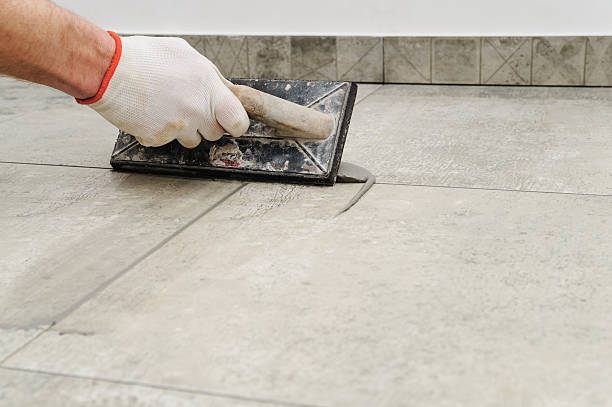
Slip-resistant porcelain tiles may not necessarily have a rough texture. Despite common assumptions, advancements in glaze technology have enabled certain tiles to maintain a smooth surface while achieving a higher anti-slip rating than one might anticipate.
Maintaining the cleanliness of tiles with slip resistance requires special attention and care to ensure the longevity of their textured surface. These tiles are designed to provide a safer walking surface by incorporating a textured pattern that promotes traction. However, this textured surface can accumulate dirt, grime, and other substances, compromising its slip-resistant properties if not properly cleaned.
Here are four important considerations when cleaning tiles with slip resistance:
By following these cleaning practices, the slip-resistant porcelain tiles can retain their effectiveness and longevity, providing a safe and durable flooring option.
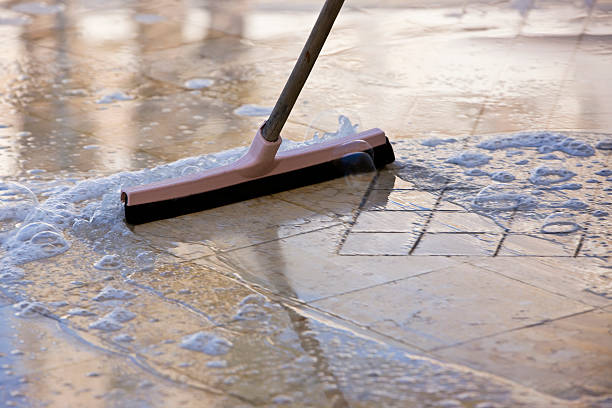
The average lifespan of anti slip porcelain tiles is highly dependent on various factors such as installation quality, maintenance, and usage. However, when properly cared for, these tiles can typically last for several decades, making them a durable and long-lasting flooring option.
Anti Slip Tile Blog Series:
Non Slip Ceramic Tile For Bathroom-10 Ideas And Guides
Porcelain Anti Slip Floor Tiles China
Anti Slip Porcelain Garden Tiles
Favorable Anti Slip Floor Tiles Price At Sunvin Ceramics
Anti Slip Floor Tiles for Wet Rooms
Non Slip Floor Tiles For Living Room
Anti Slip Ceramic Floor Tiles Commercial
Anti Slip Rating Tiles∣Your Essential Guide 2023
Non Slip Floor Tiles For Commercial Kitchen
Anti Slip Floor Tiles Commercial
Anti Slip Floor Tiles For Kitchen
Anti Slip Floor Tiles Bathroom
In conclusion, anti slip porcelain tiles are an excellent choice for areas where safety is a priority. These tiles have been specifically designed to prevent accidents and ensure a secure surface. With their slip-resistant properties and various slip ratings, they provide a reliable and durable flooring solution.
These tiles are suitable for both indoor and outdoor applications, making them versatile options for different spaces. By choosing the right anti slip porcelain tiles, you can create a safe environment while maintaining an aesthetically pleasing space.
Investing in these reliable tiles for your next flooring project is a smart decision that will provide long-term benefits. So, make an informed choice and prioritize safety by opting for anti slip porcelain tiles.
At Sunvin Ceramics, we take pride in delivering top-quality tiles that combine functionality with style. Our extensive experience in the industry has allowed us to refine our products to meet the highest standards of durability and safety.
When it comes to non-slip floor tiles, Sunvin Ceramics is your trusted partner. Contact us today to explore our exceptional range of tiles and experience the quality and professionalism that sets us apart from the rest. Let us help you transform your space into something extraordinary!